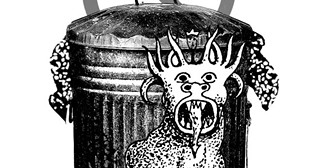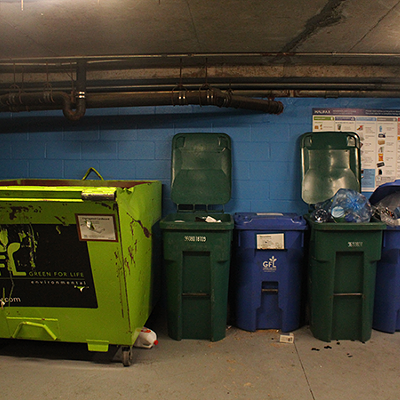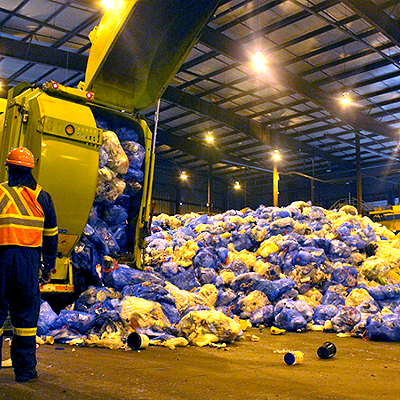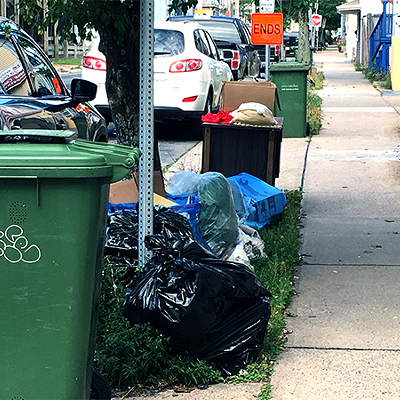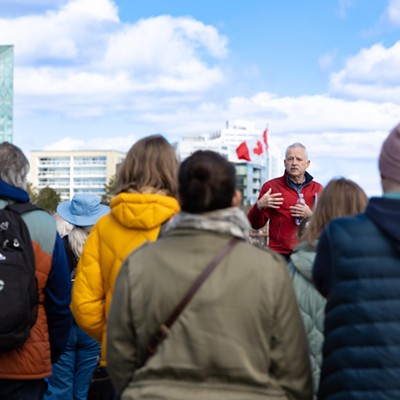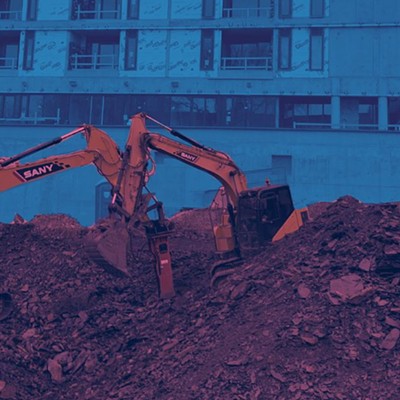Canadians waste about 40 percent of the food that enters our homes. The United States chucks nearly half its food away, $100 billion worth a year. Half of that is at home. UK consumers waste about a third of their food. Add in UK grocery store, restaurant, farm and fisher waste and it's 70 percent.
Retaillers make it worse with "just-in-time inventory," a way of minimizing stock and the cost of storage space. But if they overestimate demand, there's no place to freeze surplus meat. Maclean's reports that supermarkets reject more than a quarter of produce for aesthetic reasons---no ovular apples please. The European Union passed laws ensuring uniformity in size and shape of all produce.
Tim Jones, an anthropologist at University of Arizona, reassures us we're not bad people, just clueless about our food. He conducted a study to get to the root of food wastage and explained his findings on Australian radio in 2006.
"We've lost the concept of what food is and how it functions," he said. "It's become so commodified that they don't realize it's from a living thing. If you don't know anything about the life cycle how can you understand nutrition, how can you understand reducing your food loss?" Jones estimates 60 to 70 percent of Americans don't think about the sources of their food beyond the supermarket.
It's the same here. Lisa Kretz, good miles coordinator at Ecology Action Centre, feels that we've broken up nature's perfect food cycle. "In a functional ecosystem waste is the food of other organisms. We need a cyclical approach to production," one where unconsumed outputs become inputs.
But even fishers and farmers, who know food best, sabotage it. Why? Economics. Too much supply reduces price. A few years ago potato farmers destroyed 680 million pounds of potatoes in Canada and the US. Prices spiked 49 percent. The UN Environment Program estimates only 10 percent of marine life caught actually gets eaten---the rest is thrown back dead.
It's insane, yet logical in an insane food system. The average Nova Scotia farmer makes about $5,000 a year and works nearly 80 hours a week.
Waste grows as food is devalued. While the absolute price of food increases we spend a shrinking portion of our income on it---less than six percent now compared to 20 percent in the 50s. Back then we wasted less than a tenth of food. Now rich countries produce three times the food they need, and nearly a quarter of Canadians suffer the excess as life-threatening obesity.
The food that doesn't kill us directly does so as pollution. We waste natural resources producing food we bury or truck to the landfill. Harper's reports that about a quarter of the freshwater the United States uses goes into producing food that is wasted. And every tonne of food produced causes 4.5 tonnes of carbon dioxide equivalent emissions.
But at least the waste is composted. Sometimes.
In Halifax the data on wasted food is slim, but Shannon Betts, HRM's waste resource analyst, tracks how we dispose of it. "Up to 19 percent of [landfill waste] could have been composted."
Despite the growth of compost and recycling collection systems, Canada's waste production has grown about 24 percent in 15 years. Landfill food emits methane, a much bigger per unit contributor to global warming than carbon dioxide. Canadian landfills make more than a third of our human-made methane. Landfill food can also pollute drinking water and poison aquatic life.
The good news is, unlike some other human behaviours, the habit of wasting food changes with a little knowledge. When the UK's Waste & Resources Action Programme asked 284 households to journal the food they wasted, 69 percent of them committed to stop wasting.
Tim Jones feels we can do better by helping five-to-eight-year-olds---the ages when values are instilled---understand the life cycles of our food. He recommends taking students to farms for science class, to grow, pick, cook and eat food, and to visit the slaughterhouse, "so they can see where all that meat comes from...these big, brown, living cows. They'll get the message."
Only then, he feels, will we have a grownup culture that takes food too seriously to waste it.

